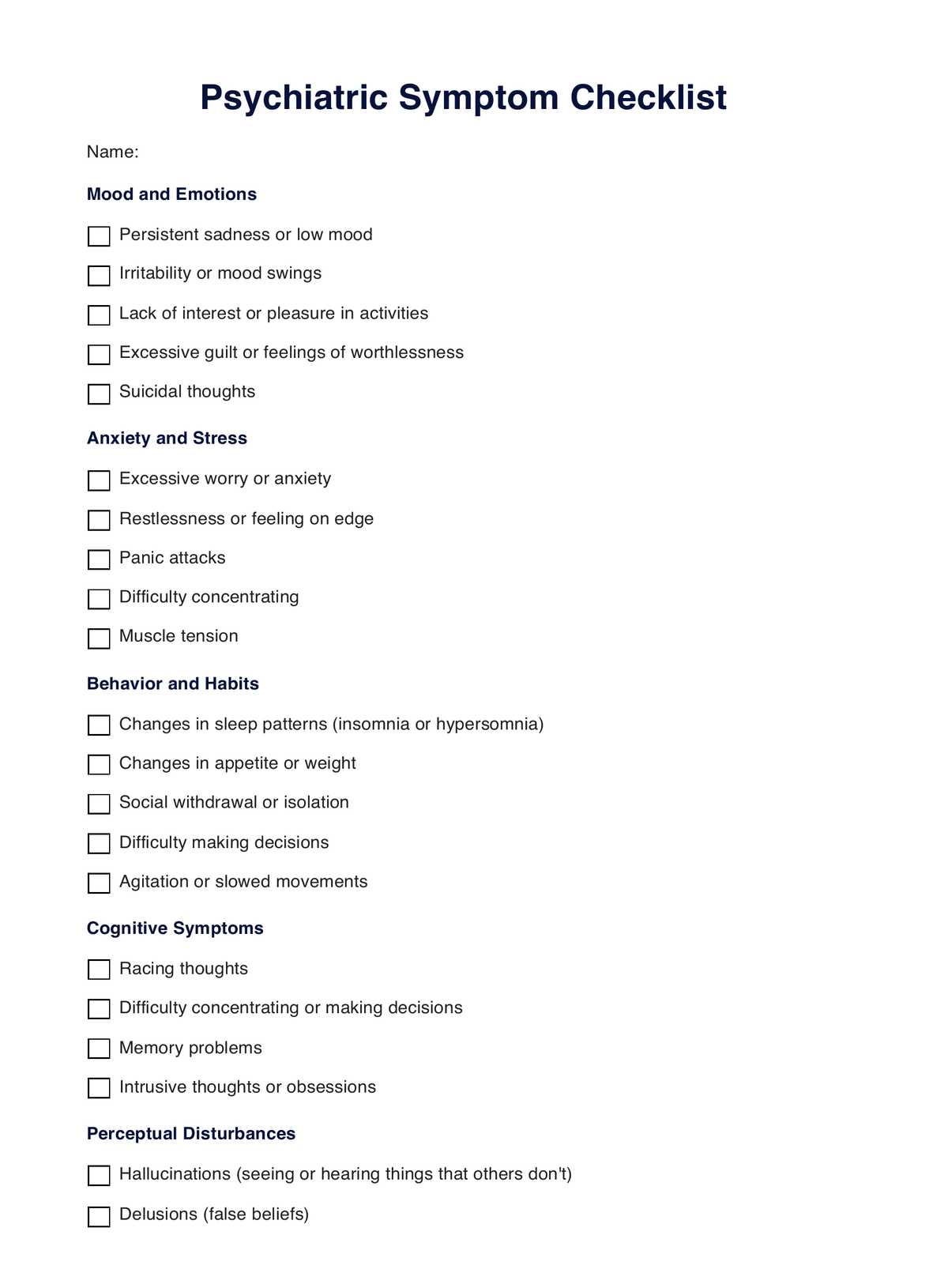The symptom checklist in mental health is a tool used to systematically assess and record various symptoms associated with mental health conditions. It helps individuals, caregivers, and mental health professionals to identify, monitor, and communicate symptoms for a more comprehensive understanding of mental well-being.

Psychiatric Symptom Checklist
A psychiatric symptom checklist is useful for assessing and tracking mental health symptoms. Download a free PDF example from Carepatron now.
Psychiatric Symptom Checklist Template
Commonly asked questions
The 90 R Checklist is a comprehensive self-report assessment designed to measure individuals' distress, discomfort, and mental health symptoms. It evaluates various domains, providing a nuanced understanding of an individual's psychological state.
Psychiatric symptoms encompass a broad range, including mood changes (e.g., persistent sadness), anxiety, cognitive disturbances (e.g., memory issues), behavioral changes (e.g., social withdrawal), and perceptual abnormalities (e.g., hallucinations). Identifying and recognizing these symptoms is crucial for early intervention and effective mental health management.
EHR and practice management software
Get started for free
*No credit card required
Free
$0/usd
Unlimited clients
Telehealth
1GB of storage
Client portal text
Automated billing and online payments











